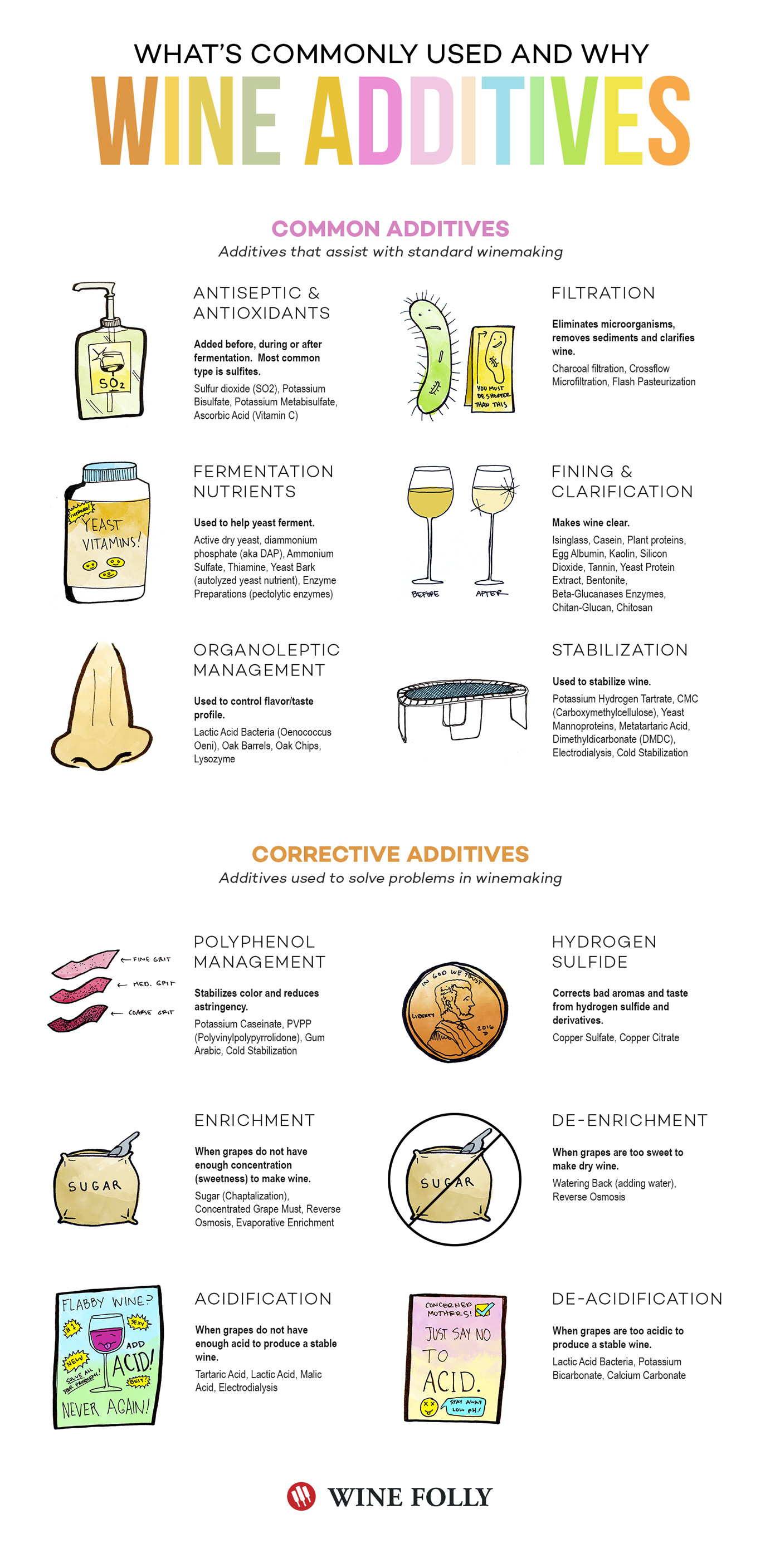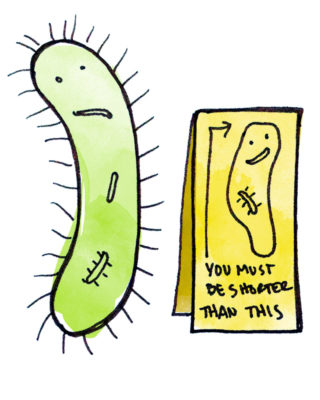There is a lot of fear and distrust around the topic of wine additives and it’s not exactly unfounded. Over thirty years ago, there was a group of incidents where industrial chemicals used to sweeten low-quality wines poisoned wine consumers (separate cases from Italy and Austria). Since then, authorities have taken measures to protect against harmful chemicals, but we haven’t forgotten the scare. Surprisingly, most additives aren’t as bad as they seem.
The main reason wine additives are popular is because most are harmless (when used correctly) and improve the organoleptic qualities (taste, smell, etc), stability, color, clarity, and age-worthiness of the wine.
Let’s take a look at what additives are commonly used in winemaking. Some of them are useful for making great wine, and others could be more questionable. Either way, it’s useful to know what goes into what you drink. Winemaking is a fascinating balance of science and chemistry.
Highlights
- Sulfites: Good. Primarily used to protect a wine from developing bacteria and oxidation. Highest levels are found in sweet wines and white/rosé wines. Don’t believe me? Read this article about sulfites.
- Lactic Acid Bacteria: Good. The same acid found in milk softens aggressive, sharp-tasting malic acidity in wine. The process, called Malolactic Fermentation, is used on nearly all red wines and some full-bodied white wines (for example, Chardonnay).
- Isinglass (fish bladder): Fine, unless you’re a vegetarian. Used as a clarifying agent in many white wines, otherwise white wines would be cloudy. By the way, clarifying additives such as isinglass precipitate out of the wine and are not in the final product.
- Sugar: (aka Chaptalization) Questionable. In some cool-climate regions (France, Germany, Northeastern USA) sugar is necessary to add to grapes when they don’t have enough natural sweetness for alcoholic fermentation. Some believe chaptalization is cheating, others say that certain grape varieties cannot produce wine without it.
- Tartaric Acid: Questionable. In some hot-climate regions, tartaric acids are added when grapes become overly ripe and lack natural acidity. Most believe that grapes should be picked at optimal ripeness and acidity balance for quality wine. However, there are many factors that will reduce acidity in wine during winemaking (thus the need for small additions of tartaric acid). Either way, less is more.
- Watering Back: Questionable. Water is added to must when sugar levels in grapes become too high. This suggests that there is an imbalance with the region’s climate or grape choice. Watering back dilutes quality.
- Flash Pasteurization: Bad. Wines are heated up and cooled down quickly in a heat exchanger, this process kills bacteria, but also can affect aromas.
- Copper Sulfate: Bad. Some wines develop faults during winemaking and end up smelling like rotten eggs. A teensy bit of copper (only very small portions are allowed because of toxicity) is allowed to counter hydrogen sulfide faults in wine. The chemical reactions caused by copper in wine are the reason why there are a myriad of magical wine “smoothing” devices on the market. Use a clean penny instead, it’s cheaper.
Corrective Additives vs. Common Additives
You’ll note that the additives are, more or less, organized based on whether they are common or corrective. A good rule of thumb to follow is that if the wine needs corrective additives of some kind, then something might be wrong with the quality of the grapes, the region (climate), or the winemaking. Of course, finding out what additives a winemaker has used is a bit challenging because there is such as shroud of consumer fear around the topic. So the next time you go tasting, try to find out why the additive may have been necessary before ruling out the wine as garbage.
Why even use wine additives?
Natural winemaking (wines made without additives) continues to grow in popularity, but the number of natural wines on the market still represents a tiny fraction (maybe 1%) of what’s available. It’s good to note that even though these wines are called natural, many still opt to use sulfites as their only addition. Beyond this, you’ll find that the best winemakers in the world generally agree that additives should be used sparingly.
Sources
Don’t take our word for it! Check the sources 🙂
EU standard list of additives and what they do (in French) Vignevin.com
Wine additives Manufacturer Scottlab.com
Commission Regulation (EC) rules for grapevine products, oenological practices and the applicable restrictions
“Materials Authorized for the Treatment of Wine and Juice” e-CFR National Archives & Records Administration


